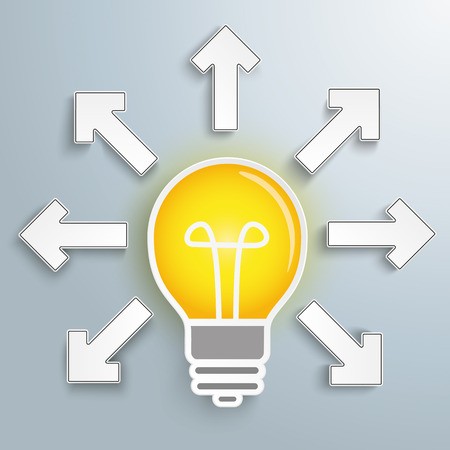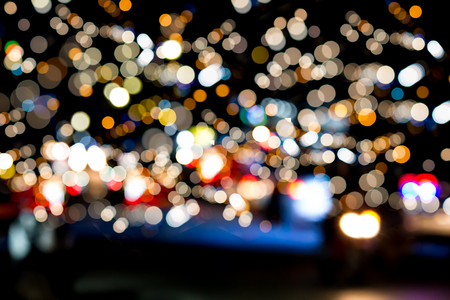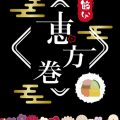1. Understanding Feng Shui Principles in Lighting
What Is Feng Shui?
Feng Shui is an ancient Chinese practice focused on harmonizing individuals with their surrounding environment. At its core, Feng Shui seeks to create balance and positive energy—known as “chi”—by arranging spaces thoughtfully. In the context of home design, Feng Shui influences everything from furniture placement to color choices and, importantly, lighting.
The Role of Lighting in Energy Flow
Lighting isn’t just about seeing clearly; it’s a vital part of how energy moves through your home. According to Feng Shui principles, good lighting supports a healthy flow of chi, which can boost your mood, improve your well-being, and make your space feel more vibrant. Poor or harsh lighting may disrupt this flow and create areas where energy feels stagnant or overwhelming.
How Different Types of Lighting Affect Your Space
| Type of Lighting | Feng Shui Impact | Best Use in American Homes |
|---|---|---|
| Natural Light | Promotes vibrant, uplifting energy; connects you with nature | Maximize windows and skylights in living rooms and kitchens |
| Soft Ambient Lighting | Creates calm, relaxing vibes; gentle flow of chi | Lamps and dimmable fixtures in bedrooms and family areas |
| Task Lighting | Focuses energy; supports productivity and clarity | Pendant lights over kitchen islands or desk lamps for home offices |
| Accent Lighting | Adds visual interest; highlights meaningful decor or art | Spotlights for artwork or LED strips under cabinets |
Connecting Feng Shui to American Home Preferences
American homes are often designed for comfort, functionality, and style. By understanding basic Feng Shui concepts, you can choose lighting that not only fits your décor but also enhances the natural flow of positive energy throughout your living spaces. Whether you love open-concept layouts or cozy corners, integrating thoughtful lighting choices ensures every area supports your well-being while reflecting your unique lifestyle.
2. Types of Lighting Fixtures and Their Feng Shui Impact
Understanding Common U.S. Lighting Fixtures
Lighting plays a crucial role in creating positive Feng Shui energy in your home. In the U.S., there are several popular types of lighting fixtures, each with their own unique impact on energy flow. Let’s explore some of the most common options:
| Type of Fixture | Description | Feng Shui Impact |
|---|---|---|
| Chandeliers | Ornate ceiling fixtures, often a focal point in dining rooms or entryways. | Promote elegance and attract positive chi when placed in main gathering spaces. Avoid placing directly over beds to prevent overwhelming energy. |
| Pendant Lights | Hanging lights, usually suspended by a cord or chain; popular over kitchen islands and tables. | Create focused illumination and can energize specific areas. Ensure they are hung at an appropriate height to avoid harsh downward energy. |
| Lamps (Table & Floor) | Portable lights that can be moved and placed as needed for task or accent lighting. | Add warmth and flexibility. Soft, diffused light from lamps helps balance sharp corners and shadows, enhancing comfort and harmony. |
| Recessed Lighting | Lights installed into the ceiling for a sleek, modern look; often used for ambient lighting. | Offer subtle, even illumination. Too many recessed lights can create a “draining” effect, so use sparingly to maintain positive energy flow. |
How Each Fixture Can Enhance or Disrupt Energy
Chandeliers: Elevating Energy Centers
A chandelier draws attention upward and can anchor a space with uplifting energy. Choose designs with rounded shapes and crystals to scatter light beautifully, symbolizing abundance and harmony. Avoid sharp or aggressive designs, which may disrupt tranquility.
Pendant Lights: Focusing Chi Where Needed
Pendant lights are perfect for highlighting important areas like kitchen islands or reading nooks. In Feng Shui, directed light brings clarity and focus but should never create glare or cast strong shadows that could fragment energy flow.
Lamps: Softening Corners and Shadows
Lamps are versatile tools for adjusting the mood of any room. Place them in dark corners to lift stagnant chi or beside seating areas to foster relaxation and connection. Warm-toned bulbs enhance cozy vibes while cool tones support alertness—choose according to the room’s function.
Recessed Lighting: Providing Subtle Support
Recessed lighting is excellent for open layouts because it distributes light evenly without dominating the décor. However, too many recessed fixtures can feel cold or clinical. Mix in other types of lighting to maintain inviting, well-balanced energy throughout your home.

3. Choosing the Right Colors and Light Temperatures
When it comes to Feng Shui, the color temperature and type of light bulbs you choose play a big role in setting the right mood and energy for your home. In American living spaces, where open layouts and multi-functional rooms are common, understanding how to match lighting with Feng Shui principles can make your home feel more balanced and inviting.
Understanding Color Temperature
Color temperature is measured in Kelvins (K) and describes whether a light looks warm (yellowish), neutral, or cool (bluish). Here’s a quick guide:
| Color Temperature | Appearance | Best For | Feng Shui Effect |
|---|---|---|---|
| 2700K-3000K | Warm White | Living rooms, bedrooms | Creates cozy, relaxing, and welcoming energy; supports harmony and comfort. |
| 3500K-4100K | Neutral White | Kitchens, bathrooms, workspaces | Promotes clarity and focus; good for active areas that need balance. |
| 5000K-6500K | Cool Daylight | Garages, basements, utility rooms | Energizing but can be too harsh for most living spaces; best used sparingly. |
How to Choose Light Bulbs for Good Feng Shui
Selecting the right bulb goes beyond just brightness. LED bulbs are popular in the U.S. because they’re energy-efficient and come in many color temperatures. For positive Feng Shui:
- Use warm white bulbs (2700K-3000K) in main living areas: This helps create a soothing atmosphere that encourages relaxation and connection among family members.
- Avoid overly cool lighting in bedrooms or cozy spaces: Cool light can feel sterile or energizing—great for a garage or workspace, but not ideal for winding down at night.
- Mimic natural daylight where possible: If you have lots of windows, complement natural sunlight with neutral or warm bulbs to keep the energy fresh but comfortable.
- Dimmable options add flexibility: Being able to adjust the brightness helps you match lighting to the time of day and desired mood, which is very supportive of good Feng Shui flow.
Matching Lighting to Each Room’s Purpose
The function of each room should guide your lighting choices. For example:
- Living Room: Warm white lights for relaxation and social gatherings.
- Kitchen/Dining: Neutral white lights for focus during food prep and mealtimes.
- Bedroom: Soft, warm lighting to encourage restful sleep.
- Home Office: Neutral white light to boost productivity without feeling too harsh.
A Quick Reference Table for Common Spaces
| Room Type | Recommended Color Temperature (Kelvin) |
|---|---|
| Living Room/Family Room | 2700K-3000K (Warm White) |
| Kitchen/Dining Area | 3500K-4000K (Neutral White) |
| Bedroom | 2700K-3000K (Warm White) |
| Bathroom/Workspace | 3500K-4100K (Neutral White) |
| Laundry/Garage/Basement | 5000K+ (Cool Daylight) |
Choosing the right colors and light temperatures isn’t just about style—it’s a key part of setting up positive Feng Shui energy in your American home. The right lighting supports comfort, productivity, and harmony throughout your space.
4. Best Placement for Lighting Fixtures to Promote Harmony
Lighting Placement in Major Rooms
Choosing where to place your lighting fixtures is just as important as selecting the right types. Good lighting placement can create a warm, welcoming atmosphere and boost positive energy flow, or “chi,” throughout your home. Here are practical tips for placing lights in key areas of a typical American house, following Feng Shui principles.
Living Room
- Main Overhead Light: Install a central ceiling fixture to evenly distribute light, helping chi circulate smoothly.
- Accent Lamps: Place floor or table lamps in darker corners to eliminate shadows and promote balance.
- Avoid Harsh Lights: Use dimmable bulbs or soft white light to create a cozy, inviting space.
Quick Reference Table: Living Room Lighting
| Lighting Type | Best Placement | Feng Shui Benefit |
|---|---|---|
| Ceiling Fixture | Center of room | Even energy flow |
| Floor/Table Lamps | Corners & next to seating | Eliminates stagnant chi |
| Sconces/Accent Lights | Walls, art displays | Adds warmth & highlights features |
Kitchen
- Main Ceiling Light: Ensure the kitchen is brightly lit with an overhead fixture for good energy and safety.
- Under-Cabinet Lights: Illuminate workspaces to make food prep easier and prevent dark spots where negative energy can gather.
- Pendant Lights: Hang above islands or dining nooks for focused task lighting and visual appeal.
Quick Reference Table: Kitchen Lighting
| Lighting Type | Best Placement | Feng Shui Benefit |
|---|---|---|
| Main Ceiling Light | Center of kitchen ceiling | Keeps energy active & vibrant |
| Under-Cabinet Lights | Beneath upper cabinets over counters | Dissolves shadows, supports productivity |
| Pendant Lights | Above island or bar area | Adds focus, improves family gathering spot chi |
Bedroom
- No Harsh Overhead Lights: Use gentle ceiling fixtures or avoid them altogether to encourage relaxation.
- Bedside Lamps: Place matching lamps on both sides of the bed for relationship harmony and balanced energy.
- Avoid Direct Lighting Above Bed: Overhead lights directly above the bed can disturb sleep; use wall sconces or reading lights instead.
Quick Reference Table: Bedroom Lighting
| Lighting Type | Best Placement | Feng Shui Benefit |
|---|---|---|
| Lamps (Bedside) | Bedsides, both sides if possible | Nurtures partnership & calmness |
| Sconces/Wall Lights | Sides of the bed or near headboard | Adds soft illumination without harshness |
| No direct ceiling light above bed | Avoid directly over sleeping area | Puts mind at ease, supports restful sleep |
The key is to layer your lighting—use a mix of overhead, task, and accent lights—and position them thoughtfully to invite positive vibes into every room. This approach honors both Feng Shui wisdom and the practical layouts found in most American homes.
5. Combining Style and Feng Shui in Your Lighting Choices
Blending Personal Style with Positive Energy
When choosing lighting fixtures for your home, its important to strike a balance between your personal taste, popular U.S. interior design trends, and key Feng Shui principles. This combination helps you create an inviting space that not only looks great but also supports positive energy flow.
Popular Lighting Styles in the U.S. & Their Feng Shui Benefits
| Style | Description | Feng Shui Tip |
|---|---|---|
| Modern Farmhouse | Features wood, matte metals, and simple lines. Warm, cozy vibe. | Choose soft white bulbs and avoid harsh overhead lights to promote harmony. |
| Mid-Century Modern | Sleek lines, globe bulbs, brass finishes. Retro yet timeless. | Use rounded shapes to support smooth energy flow (avoid sharp angles). |
| Industrial Chic | Exposed bulbs, black metals, Edison lights. Urban feel. | Add dimmers to control brightness and soften the mood as needed. |
| Coastal/Boho | Natural materials like rattan, woven shades, relaxed vibe. | Opt for layered lighting to bring warmth and a sense of comfort. |
| Classic Traditional | Candelabras, glass pendants, elegant finishes. | Select symmetrical arrangements to create a balanced atmosphere. |
Tips for Making Your Selection
- Layer Your Lighting: Combine overhead fixtures with floor lamps or wall sconces to avoid dark corners and encourage good chi (energy) movement throughout the room.
- Avoid Harsh Shadows: Soft, diffused light is more welcoming and aligns with Feng Shui’s goal of gentle energy flow.
- Match Fixtures to Room Function: Use brighter lights in active spaces like kitchens, and softer options in bedrooms or relaxation areas.
- Reflect Your Personality: Pick finishes and styles that resonate with you—Feng Shui works best when you feel happy and comfortable in your space.
- Add Natural Elements: Choose fixtures made from wood, stone, or natural fibers to connect with earth elements for grounding energy.
Your Path to a Balanced & Stylish Home
Selecting the right lighting is about more than just looks; it’s about making your home feel both stylish and energetically balanced. By blending U.S. design trends with Feng Shui wisdom, you can create rooms that are bright, beautiful, and full of positive vibes.


